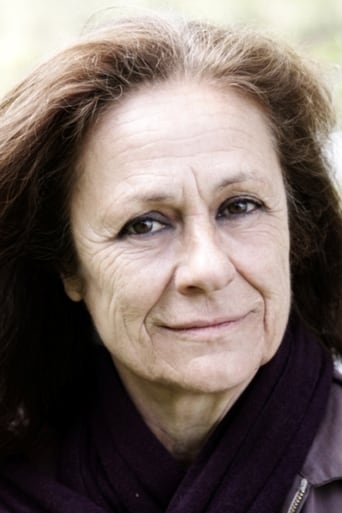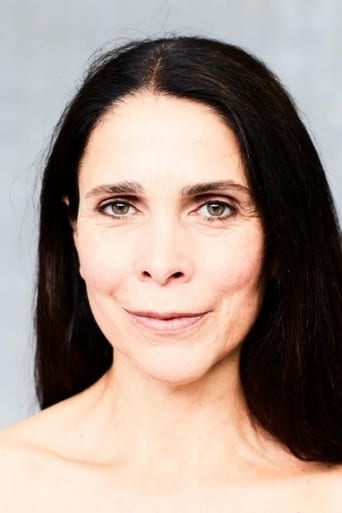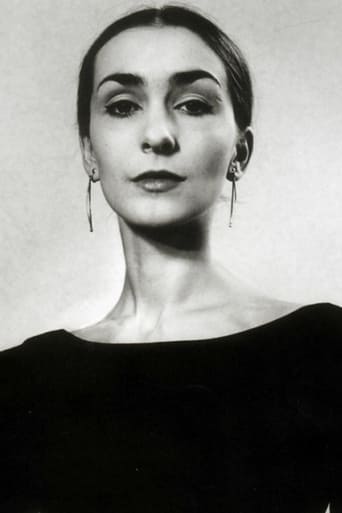modrnknght
I went to see this last night, and though I barely retained my sanity to the end, there were many times I wanted to go screaming from the movie theater.Most of the film is filled with weirdly interpretive dance sequences that were crazy enough to make you want to bang your head against a wall (some of the dancers actually did that during dances), but maybe it wouldn't have been so horrible if we were told what they were supposed to be interpreting. I discussed it with one other person (there were only four of us in the entire theater) and I said to her that "Okay, she wasn't crazy because these people swore loyalty to her for so many years, but from these dances...no, she was crazy." Let me give you a few examples...A dancer comes out with two pieces of meat, and yells, "This is veal!" And then she dances for several minutes with the veal in her ballet slippers.One male dancer is walking along and another places a branch on his right shoulder, then another on a left shoulder, crux of the elbow, and so on, until he has several balanced on different parts of his body.A female carries a pillow on a real subway, making monstrous noises with every step, while a make dancer sits at the back of the subway car wearing some kind of weird animal-type ears.One female dancer carries a potted tree on her back around a lake. No dancing, just carries a potted tree around on her back.One woman throws shovels of dirt at a crouching female dancer.This is just a small group of examples. The film had two hours of similar W-T-F routines!!!It is no wonder the dancers in the film all looked so miserable when interviewed! I am hoping to flood myself with other images from TV or wherever now in order to wipe out those memories caused by this film.
chaos-rampant
Pina Bausch died just prior to this being made. I was familiar with her just briefly from Almodovar's Talk To Her, but sadly not more and not live. So, at least for the time being, this is as much as we'll get to know her, independent of her being here to explain, assuming she would at all, and this is perhaps the most fitting part. We'll get to know her in the purest sense possible, by what dance stirred her heart. Because in a sense you are what you have embodied and made life from, everything else being words, roles, play-acting, it is more than enough to have just this. It is what dance is all about.And this is how she handled her troupe, as a director herself. Hints, abstract frameworks. How it comes across in the actual dance is a marvel; the debris of unfinished thoughts in the midst of empty space, of course the entire flow framed small in empty stages, but in each person as well, bits of recognizable motion in the midst of syncopated blurs, half-finished gestures of story.We see plenty of I assume excerpts of her dances, all of them more or less captivating. I do not know a thing about the medium, so I will let aficionados explain the importance of how she innovated form. She might as well have been an inverse Beckett for all I know, danced, acting out hurt that he repressed.But I am interested in film, and how images can seduce into the surface the core of our being. And what Pina do the images reveal? Lonely, hurt, strong, frantic search. An anxious sexuality at heart, or better yet anxious at the prospect of touch, connection.And it is important to note this connection with her players, and by extension ourselves as viewers. All of them without exception are baffled to communicate their relationship with her, as though it was so visceral, so 'now', it is impossible to relate after the fact, disembodied in words. I'm sure they could all say it with a dance, wonderfully so. It is even possible that not all of them got her - one of them dedicates weightlessness in her memory, where the Pina I saw was all about weight and pull.But the're all definitely sure of one thing, that she looked into their innermost self.Meddlesome words again, 'that she looked into their innermost self'. Watching the film, this is what I get the sense Pina accomplished: she allowed empty space around these people, not over-directing, not explaining every gesture, perhaps not even communicating a whole point or story, reflecting this in the actually sparse surroundings she prepared around them, so at her smallest hint they poured into that space their own spontaneous being. They came out having bared self, having made sense - body, motion - what used to be words, ideas, having been one with just the moment. Pina had only made it possible they do.She asked one of her dancers to portray joy, as simple as this. He offered his version, personal self, and she choreographed a scene around it.So there it is in a nutshell, a valuable insight for us viewers. This is something you watch without the need to know what it means, trusting it does in the exchange.Oh, there is Wenders in all this. Wenders is a frame artist, always looking for something to frame and apply colors to. Most of the time he has dull insights. In Tokyo-Ga, he set out to frame Ozu but missed by so much it made me cringe. Here he comes across a woman that is unfettered soul. He does not puzzle about how you film dance, trusting she has taken care of even that. He does not get in the way too much, most of the time carving with his camera soft paths inside the dance. His dull insight, in an attempt to somehow address the cinematic experience, is the whole as one more staged performance before an audience - many re-enactions on different stages occur in the film, some of them projected on a screen. But he does not turn any of this into a story, which is bound to alienate most viewers.It is perhaps lucky that Wenders did this, opposed to say someone like Almodovar who commands deeply layered vision. Like Pina's dancers, he is an empty vessel. She fills with the joy of color.






